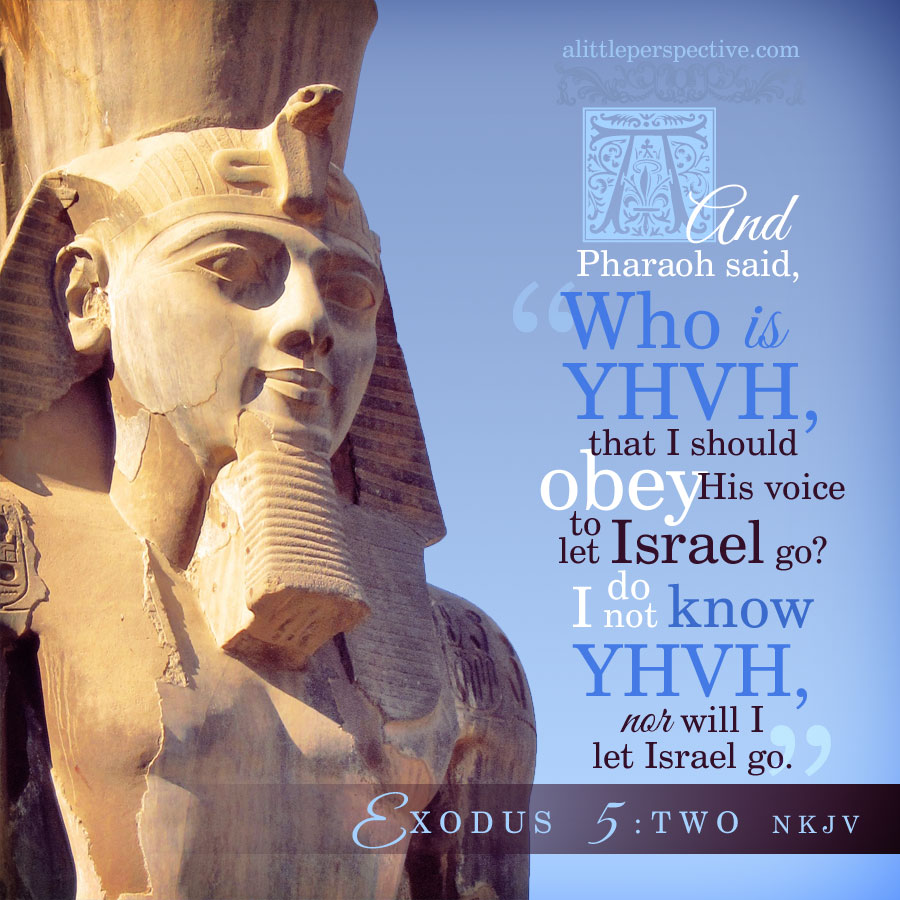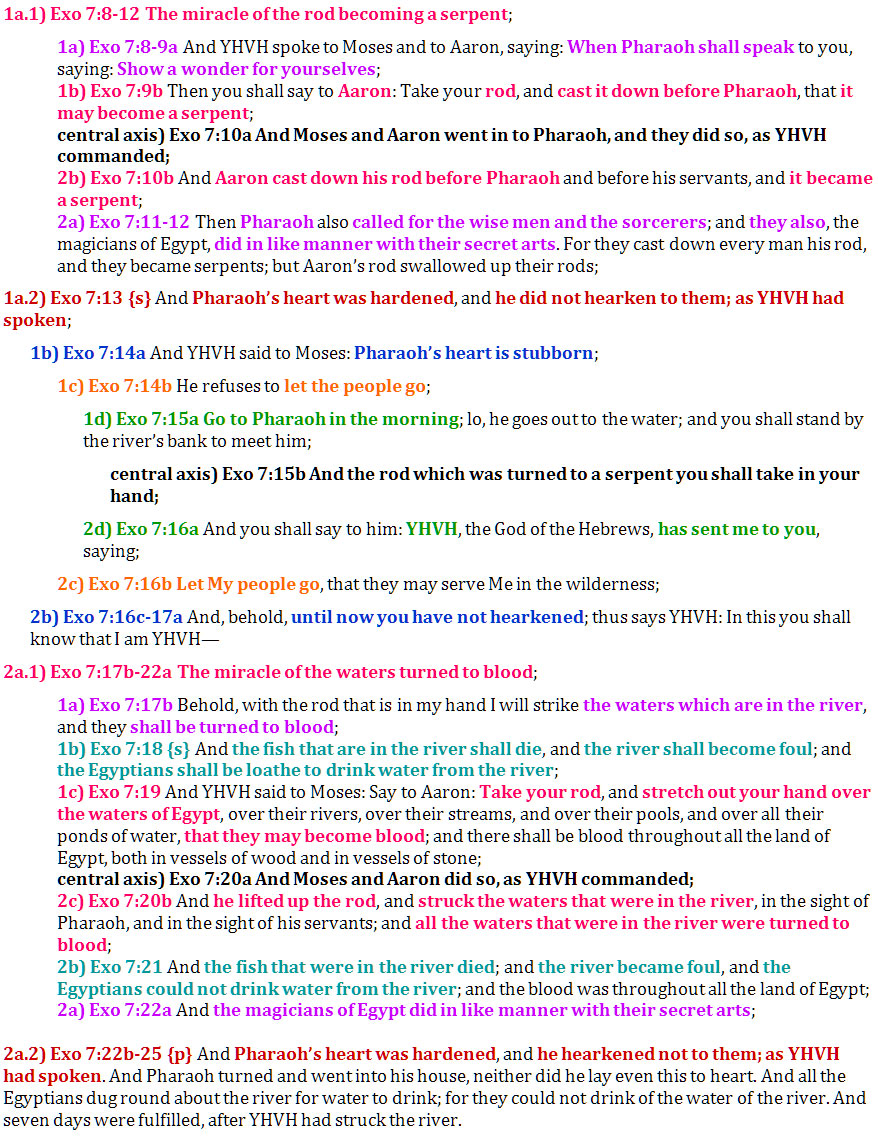Read Exodus 7:8-25 at Bible Gateway.
Hebrew paragraph divisions
Exo 7:8-13 {s} Aaron’s rod becomes a serpent + magicians’ rods become serpents
Exo 7:14-18 {s} Warning re: the river will become blood
Exo 7:19-25 {p} The river becomes blood + magicians did also
Exo 7:8-25 Strong theme
The paragraph divisions show us that God considers these three paragraphs together all facets of the same topic. What is that overarching topic? The pattern is of increasing magnificence in the miracles enacted, but with nothing harmed: merely the inconvenience to the Egyptians increases when the warning is not heeded. So, the character of God revealed in this paragraph, is
1) ruler over the natural world (a rod changing to a serpent);
2) ruler over the spiritual world (Aaron’s rod swallowing the magicians’ rods; also power over the Nile, whom the Egyptians considered a god);
3) merciful (warning and a chance to repent before the plague of blood);
4) just and fair (the plague of blood which only increases inconvenience but does not harm).
God is revealing to a people who do not know Him, who He is by His mighty works.
Theme: YHVH reveals who He is by His mighty works.
Original Hebrew
Stubborn is Strong’s H3515, kabed, an adjective meaning “heavy, laden;” from Strong’s H3513 כבד kabad, a primitive root meaning, “to be heavy.” The positive meaning of the verb is weighty, glorious; the negative meaning is burdensome, severe. The ancient pictographs are kaph + bet + dalet.
kaph כ, ך = the open palm, thus bend, open, allow, tame
bet ב = the house, thus house, household, family, in, within
dalet ד = the door, thus enter, move, hang
In ancient days, the covering (kaph, as the father’s open palm covers the head of his son when he blesses him) of the tent (bet) was made from a black goat hair fabric. It allowed for some light to come through, “giving the appearance of starts overhead,” according to the Ancient Hebrew Lexicon. Thus a related word to this root is the concrete noun for “stars.” As there is no end to the abundance of the stars overhead (Gen), the kaph + bet combination can signify “a great abundance” as it does here. So, a great abundance (kaph + bet) which hangs (dalet, as a door hangs from its frame) about a person.
Refuse is Strong’s H3985 מאן ma’en, a primitive root meaning, “to refuse.” The ancient pictographs are mem + aleph + nun.
mem מ, ם = the water, thus chaos, mighty, blood
aleph א = the ox head, thus strength, power, leader
nun נ, ן = the seed, thus continue, heir, son
The blood (mem) passes the strength (aleph) of one generation to the next via procreation (nun). The positive meaning of the root signifies firmness of character; steadfast or truthful; the negative meaning of the root signifies strong-willed; refusal or stubbornness.


















Leave a Reply